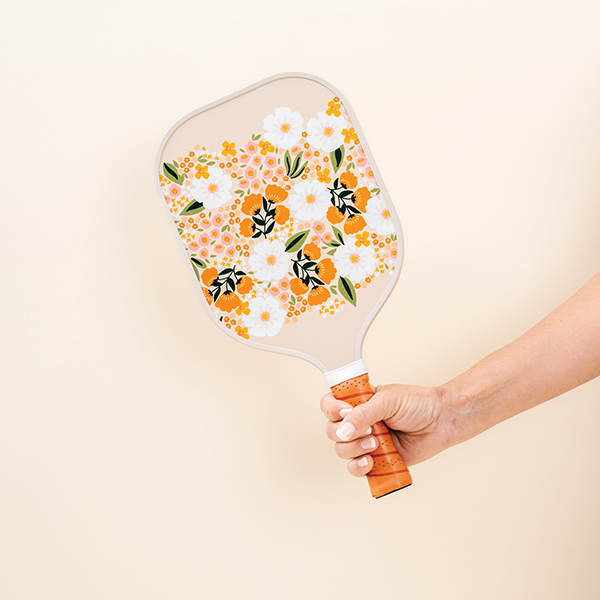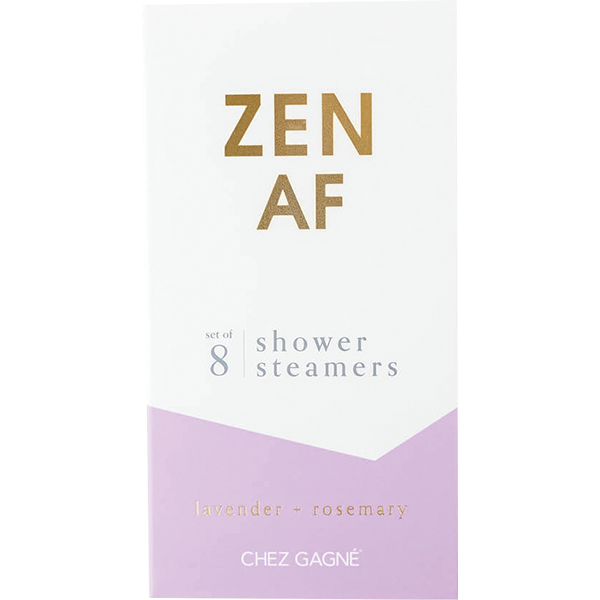Wrap Up Profits
Paper is Fashion
Polka dots. Fuchsia. Turquoise blue. Paisley. Patti Stracher will tell you: The latest trends in fashion translate right on over to gift wrap.
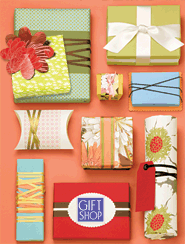 “Paper is fashion,” says Stracher, manager of the National Stationery Show held every year in New York. “There are a lot of designers who interpret fashion and home decor trends and tell their own story on paper. It’s a very, very fashion-forward industry. It’s trendy, it’s high-color, high-elegance and luxury.” This is why you’ll be seeing high shine and color, heavy patterns and big geometrics on gift wrap and related items—just as you’re seeing in clothing and related accessories, Stracher says.
“Paper is fashion,” says Stracher, manager of the National Stationery Show held every year in New York. “There are a lot of designers who interpret fashion and home decor trends and tell their own story on paper. It’s a very, very fashion-forward industry. It’s trendy, it’s high-color, high-elegance and luxury.” This is why you’ll be seeing high shine and color, heavy patterns and big geometrics on gift wrap and related items—just as you’re seeing in clothing and related accessories, Stracher says.
The world of gift wrap
The assortment of high-end gift wrap is simply stunning. Designer gift wrap from vendors like Cavallini, Caspari and the Gift Wrap Company, to name just a few, feature cutting-edge designs in a wide variety of designs and colors. There is wrap for everyday gift giving, birthdays, weddings, even retirement and graduation parties. Companies like Roger la Borde, in Seattle, manufacture many lines of reversible gift wrap that is coordinated across an entire slew of related packaging products: gift tags, gift bags and cards, even notebooks, sticky notes and journals. Whimsy Press, in Atlanta, is another company that manufactures reversible gift wrap.
Gift wrap is an established retail category in many gift stores. Along with associated gift packaging products—upscale tags, ribbons, bows, even gift bags—it constitutes an important selling niche in these stores. Selling gift wrap and bags, bows, ribbon, stationery and other paper-related items in your store—as opposed to only offering gift packaging of products that are purchased—can boost sales, experts say. A recent report released by Stevens, PA-based Unity Marketing found that the typical consumer of gifting and party supplies spent $136 buying products in this category in 2007. The marketing research firm found that sales of gift wrap and tissue paper topped the category, with $31 spent on average, followed by gift bags at $22, and ribbons and bows at $20.
Gift wrap as customer-service tool
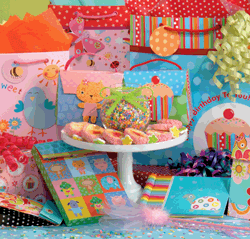 Linda O’Boyle, owner of Metro Home Style, a gift store in Syracuse, NY, offers complimentary gift wrap to her customers. She says it offers her an edge over impersonalized big box stores. O’Boyle’s practice is shared by many other gift-store retailers, who routinely offer gift wrapping services to their customers.
Linda O’Boyle, owner of Metro Home Style, a gift store in Syracuse, NY, offers complimentary gift wrap to her customers. She says it offers her an edge over impersonalized big box stores. O’Boyle’s practice is shared by many other gift-store retailers, who routinely offer gift wrapping services to their customers.
It’s considered a “value-added” service that keeps customers happy—and coming back for more, experts say. Retail expert Gabriela Delworth, of Toronto, leads workshops and seminars on the art of gift wrapping for retailers. Customers have less and less time to buy gifts, says Delworth, who suggests saving your customers’ time and keeping them in the store a little longer by offering gift-wrapping services.
While offering gift wrap is often standard as a customer-service tool, some question its usefulness. Mike Kraus is a Los Angeles-based retail advisor for allbusiness.com, an online media and e-commerce company that serves as a resource for business professionals. He doesn’t believe in gift wrapping as a customer-service tool. “It takes away the focus from selling,” he says, adding that along with taking your employees away from selling on the floor, offering such a service may also prove frustrating for customers who don’t wish to stand around and wait as packages are wrapped.
Gift packaging as marketing tool
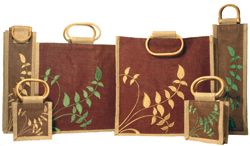 Many retailers use gift packaging—bags, wrap or boxes—as an extension of their store’s marketing strategy. The branding helps. Kraus recommends that stores use gift boxes for this purpose. When done creatively, they can make all the difference to your business, he says. Kraus cites the example of Gump’s, a high-end gift store in San Francisco that packages items in “simple, sturdy white boxes,” he says. A simple, yet elegant red ribbon is placed around the box and “scalloped” tissue put inside. The effect is memorable, he says.
Many retailers use gift packaging—bags, wrap or boxes—as an extension of their store’s marketing strategy. The branding helps. Kraus recommends that stores use gift boxes for this purpose. When done creatively, they can make all the difference to your business, he says. Kraus cites the example of Gump’s, a high-end gift store in San Francisco that packages items in “simple, sturdy white boxes,” he says. A simple, yet elegant red ribbon is placed around the box and “scalloped” tissue put inside. The effect is memorable, he says.
Retailer Kristi Mott loves her store’s jute shopping bags. The owner of Southern Charm, a gift shop in Eufaula, AL, says the bags, with their bamboo handles and hip colors, are much in demand. The bags are used not just for holding store purchases; customers tell Mott that they bring the bags to the beach. In effect, these bags serve as walking advertisements for the store.
Mott worked with the vendor Bring it in a Bag to come up with a bag featuring her store name and logo that she could initially promote around the holidays. She informed customers that if they spent $150 or more in the store, they’d get a bag for free as a “thank you.” Normally, the bags would sell for about $4 to $5. The promotion worked so well—customers couldn’t get enough of the bags—she began offering them as a gift-wrap option for an up-charge. Customers also could simply buy them outright. Now she offers the same deal year-round.
“We sell a lot of bags,” Mott says. “And when people look at the bag, they know it’s Southern Charm. We try to stay very trendy.”
Kraus says this kind of marketing move is smart. “This is ultimately about your brand,” he says. “If doing some kind of gift packaging makes sense, you should do it.”
Custom creations
 The demand for customized options in gift bags and other packaging accessories has led to a flourishing business. By researching trends and soliciting input from retailers, vendors can create customer-specific designs. Nashville Wraps, a Hendersonville, TN-based company that sells gift and candy boxes, paper and plastic bags, gift wrap, tissue paper, and wholesale ribbon and bows, offers a wide range of custom designs. Buffie Baril, the company’s Internet marketing coordinator, says customers love the one-of-a-kind design collections. “They want packaging that is consistent with their business and reflects their image—whether it’s elegant and sophisticated or fun and trendy,” Baril says.
The demand for customized options in gift bags and other packaging accessories has led to a flourishing business. By researching trends and soliciting input from retailers, vendors can create customer-specific designs. Nashville Wraps, a Hendersonville, TN-based company that sells gift and candy boxes, paper and plastic bags, gift wrap, tissue paper, and wholesale ribbon and bows, offers a wide range of custom designs. Buffie Baril, the company’s Internet marketing coordinator, says customers love the one-of-a-kind design collections. “They want packaging that is consistent with their business and reflects their image—whether it’s elegant and sophisticated or fun and trendy,” Baril says.
Pete Shore is director of marketing for Gift Box Corporation of America, a 70-plus-year-old, Carlstadt, NJ-based manufacturer of gift boxes, bags, ribbon and accents. He also strongly believes in the power of customizing your packaging. “We do a lot of custom imprinting,” Shore says. “We hot stamp all of our boxes and shopping bags for our customers, which a lot of them choose to do. There’s a tremendous advertising value.”
Other packaging accessories
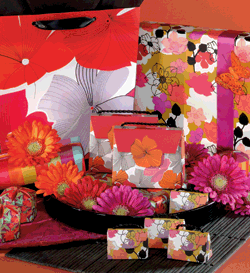 Gift bags too are increasingly popular among consumers these days, says Nancy Dickson, creative director at The Gift Wrap Company based in Boston. Bags can be reused over and over again, which probably explains their appeal. Gifts can also be boxed, and gift boxes are also popular, says Dickson. Coordinated gift tags and ribbons seal the deal. In keeping with the rise in gift-card giving, many companies offer gift-card sachets and envelopes.
Gift bags too are increasingly popular among consumers these days, says Nancy Dickson, creative director at The Gift Wrap Company based in Boston. Bags can be reused over and over again, which probably explains their appeal. Gifts can also be boxed, and gift boxes are also popular, says Dickson. Coordinated gift tags and ribbons seal the deal. In keeping with the rise in gift-card giving, many companies offer gift-card sachets and envelopes.
The design styles in this wide spectrum of products are just as varied as in gift wrap. Yakety Sak, a wholesaler in Schaumburg, IL, sells gift bags that “talk” when opened. Then there are the gift boxes from Largo, FL-based Kahmi World that play music when opened.
Adding a special flair to packaging can indeed boost sales, says George White, president of Up With Paper, in Mason, OH. “The trend we are seeing is, people are looking for that special touch,” says White, whose company is known for its “pop-up” greeting cards, and this year is launching “pop-up” gift embellishments. “You use them instead of a ribbon, and it really makes the difference. It’s a fantastic way to make a gift look its best, replacing a bow with an attention-grabbing pop-up.”
Going green
Repeated time and again by those in the gift packaging market is the push—and demand—for “green” products. Admittedly, this is a tough balance to strike, given the very nature of the business. “It’s such a hard thing… it’s not a very eco-friendly product to begin with,” says Dickson, of The Gift Wrap Company.
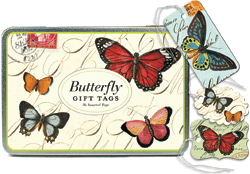 Companies are looking to create products with less of an impact on the environment. They are experimenting with safer inks, such as soy-based, or working with recycled paper. One hurdle to overcome: cost. It can be a slow process, Dickson says.
Companies are looking to create products with less of an impact on the environment. They are experimenting with safer inks, such as soy-based, or working with recycled paper. One hurdle to overcome: cost. It can be a slow process, Dickson says.
“It is an expense, and it does cost more to do,” she says. “A lot of items are manufactured in China, and they don’t have a lot of good paper supplies. So it is a problem sourcing the materials and then asking these factories to adapt to this.”
Many companies are hopping on the green bandwagon. Feterie, a wholesaler in San Jose, CA, sells a collection of wrapping paper which is silkscreen-printed using vegetable or water-based ink. The company starts with eco-friendly paper produced by a paper mill that produces its own clean, renewable hydroelectric energy.
Then there’s Swanzey, NH-based Tree-Free, which produces gift packaging with a special paper it calls Sweetpaper. This paper is made from the post-agricultural waste of the sugarcane industry. The company’s marketing assistant, Meghan Strauss says Sweetpaper is produced without bleach or harmful chemicals, in a mill that uses a minimum 50 percent renewable energy—hydropower and wind.
Earlier this year, Nashville Wraps announced its “Green Way” products, which include recycled paper and plastic shopping bags, gift boxes, tissue paper, jewelry boxes and gourmet packaging products.
Shore, of The Gift Box Corporation of America, says the company has long been committed to green packaging, noting that its boxes are made of 100 percent recycled material. “Everyone is getting involved and jumping on the bandwagon. The environment is messed up and needs to be fixed. It’s more than a trend—it’s a new way of life. It’s something people are talking about.”
Rupa Bihani Shah, owner of New York-based Bring it in a Bag, is a strong proponent of eco-friendly products. She believes her company’s jute bags satisfy consumers’ desire for such items. While many of your customers may be comfortable with simple paper or plastic bags, Bihani Shah believes there’s a growing interest in reusable bags that tout your store’s name and are attractive enough to be used for other purposes besides shopping.
Even ribbons are going organic. Schiff Ribbon’s new lines are made using 100 percent organic fibers—hemp or cotton. Both ribbons can be custom-dyed using organic dyes. Whether it be environmentally friendly gift packaging or gift wrap in the latest trendy styles, this old cornerstone of the stationery category is one worth a closer look.



















